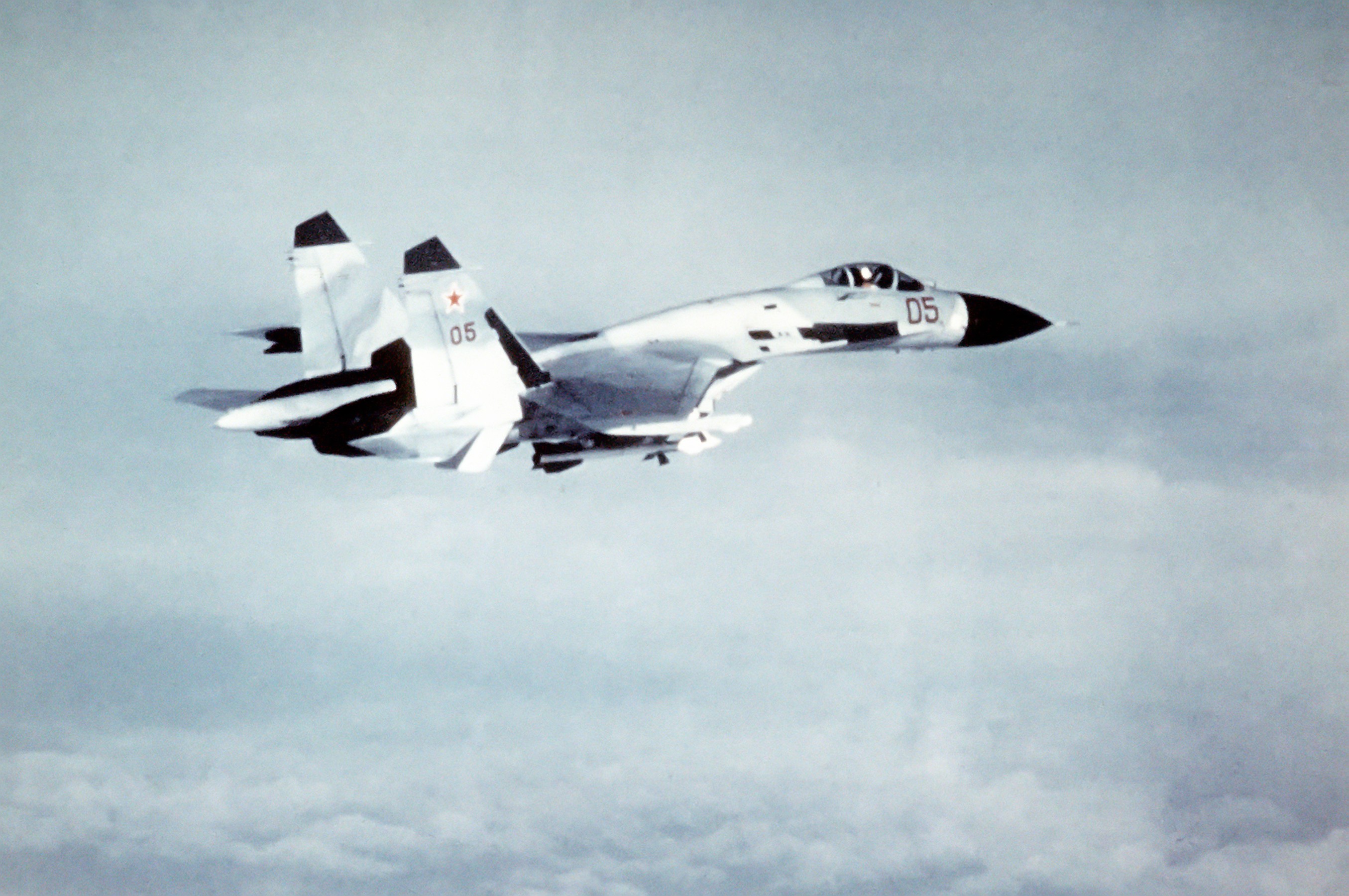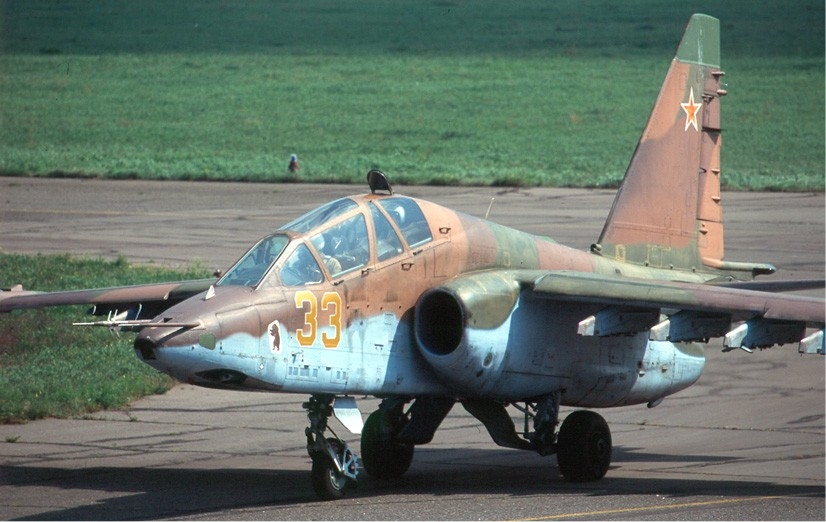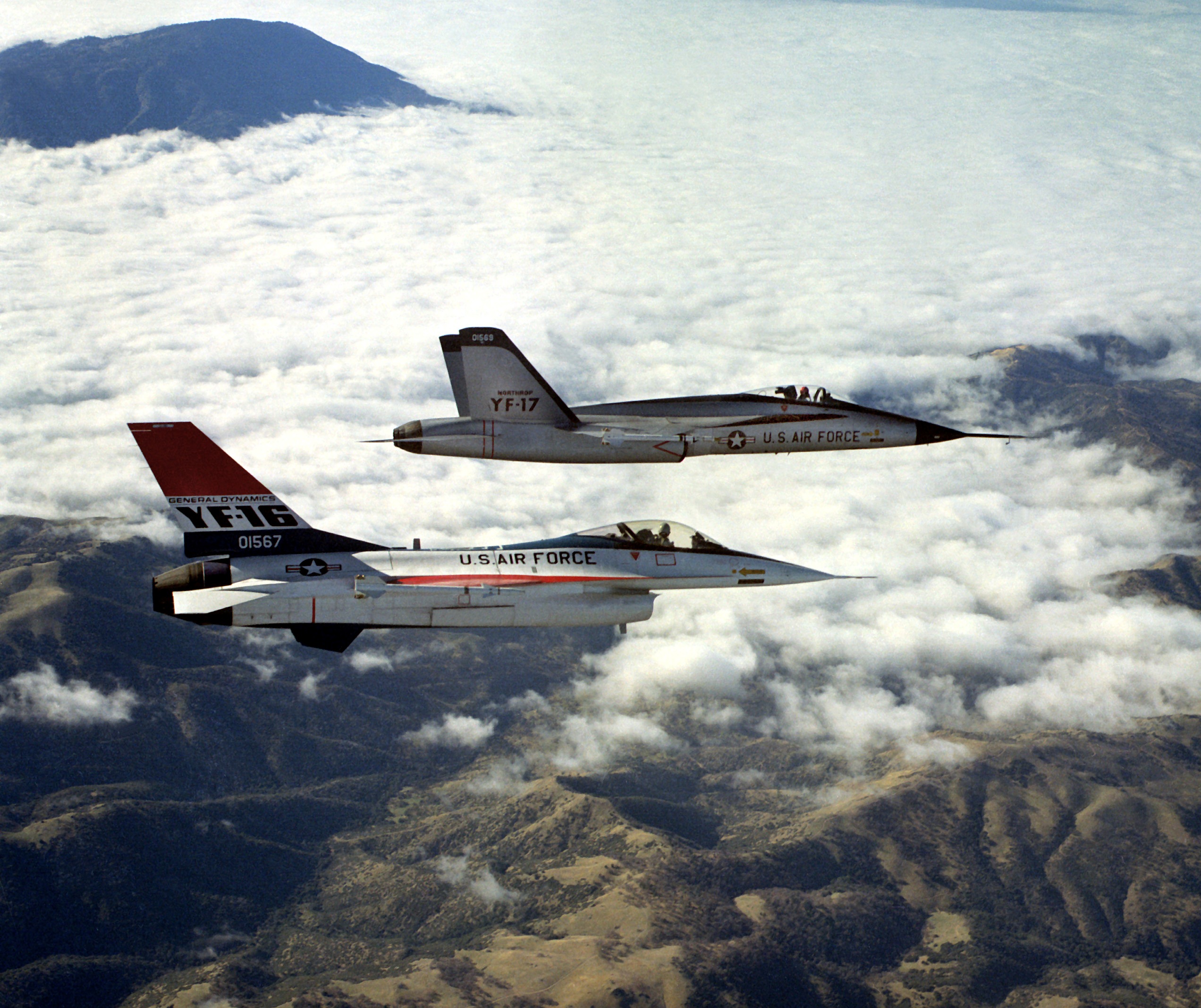|
AASM Hammer
The AASM (), also known as AASM Hammer ("Hammer" standing for "Highly Agile Modular Munition Extended Range"), is a French, all-weather, precision-guided munition, smart air-to-surface stand-off weapon developed by Safran Electronics & Defense. Meant for both close air support and deep strike missions, the AASM is highly modular. The AASM consists of a nose-mounted guidance section and a tail-mounted range extension kit (featuring winglets for maneuverability and a rocket booster) attached to either a , , or class bomb (such as the General-purpose bomb#Modern American GP bombs: the Mark 80 series, Mark 80 series general purpose bombs). There are three variants of the AASM Hammer kit, with different guidance options depending on the target and operational context. The baseline variant features a hybrid inertial navigation system (INS) and a Global Positioning System (GPS) guidance system. The two other variants respectively integrate, in addition to the hybrid INS/GPS guidance sy ... [...More Info...] [...Related Items...] OR: [Wikipedia] [Google] [Baidu] |
Glide Bomb
A glide bomb or stand-off bomb is a standoff weapon with flight control surfaces to give it a flatter, gliding flight path than that of a conventional bomb without such surfaces. This allows it to be released at a distance from the target rather than right over it, allowing a successful attack without exposing the launching aircraft to anti-aircraft defenses near the target. Glide bombs can accurately deliver warheads in a manner comparable to cruise missiles at a fraction of the cost—sometimes by installing flight control kits on simple unguided bombs—and they are very difficult for surface-to-air missiles to intercept due to their tiny radar signatures and short flight times. The only effective countermeasure in most cases is to shoot down enemy aircraft before they approach within launching range, making glide bombs very potent weapons where wartime exigencies prevent this. World War II-era glide bombs like the German Fritz X and Henschel Hs 293 pioneered the use o ... [...More Info...] [...Related Items...] OR: [Wikipedia] [Google] [Baidu] |
Solid Rocket Motor
A solid-propellant rocket or solid rocket is a rocket with a rocket engine that uses solid propellants (fuel/oxidizer). The earliest rockets were solid-fuel rockets powered by gunpowder. The inception of gunpowder rockets in warfare can be credited to the ancient Chinese, and in the 13th century, the Mongols played a pivotal role in facilitating their westward adoption. All rockets used some form of solid or powdered propellant until the 20th century, when liquid-propellant rockets offered more efficient and controllable alternatives. Because of their simplicity and reliability, solid rockets are still used today in military armaments worldwide, model rockets, solid rocket boosters and on larger applications. Since solid-fuel rockets can remain in storage for an extended period without much propellant degradation, and since they almost always launch reliably, they have been frequently used in military applications such as missiles. The lower performance of solid propellants (a ... [...More Info...] [...Related Items...] OR: [Wikipedia] [Google] [Baidu] |
Precision-guided Munition
A precision-guided munition (PGM), also called a smart weapon, smart munition, or smart bomb, is a type of weapon system that integrates advanced guidance and control systems, such as Global Positioning System, GPS, laser guidance, or Infrared search and track, infrared sensors, with various types of Ammunition, munitions, typically Missile, missiles or Shell (projectile), artillery shells, to allow for high-accuracy strikes against designated Targeting (warfare), targets. PGMs are designed to precisely hit a predetermined target, typically with a margin of error (or circular error probable, CEP) that is far smaller than conventional unguided munitions. Unlike unguided munitions, PGMs use active or passive Control system, control mechanisms capable of steering the weapon towards its intended target. PGMs are capable of mid-flight course corrections, allowing them to adjust and hit the intended target even if conditions change. PGMs can be deployed from various platforms, includi ... [...More Info...] [...Related Items...] OR: [Wikipedia] [Google] [Baidu] |
Su-27
The Sukhoi Su-27 (; NATO reporting name: Flanker) is a Soviet-origin twin-engine supersonic supermaneuverable fighter aircraft designed by Sukhoi. It was intended as a direct competitor for the large US fourth-generation jet fighters such as the Grumman F-14 Tomcat and McDonnell Douglas F-15 Eagle, with range, heavy aircraft ordnance, sophisticated avionics and high maneuverability. The Su-27 was designed for air superiority missions, and subsequent variants are able to perform almost all aerial warfare operations. It was designed with the Mikoyan MiG-29 as its complement. The Su-27 entered service with the Soviet Air Forces in 1985. The primary role was long range air defence against American SAC Rockwell B-1B Lancer and Boeing B-52G and H Stratofortress bombers, protecting the Soviet coast from aircraft carriers and flying long range fighter escort for Soviet heavy bombers such as the Tupolev Tu-95, Tupolev Tu-22M and Tupolev Tu-160. The Su-27 was developed ... [...More Info...] [...Related Items...] OR: [Wikipedia] [Google] [Baidu] |
Su-25
The Sukhoi Su-25 ''Grach'' ( ('' rook''); NATO reporting name: Frogfoot) is a subsonic, single-seat, twin-engine jet aircraft developed in the Soviet Union by Sukhoi. It was designed to provide close air support for Soviet Ground Forces. The first prototype made its maiden flight on 22 February 1975. After testing, the aircraft went into series production in 1978 in Tbilisi in the Georgian Soviet Socialist Republic. Early variants included the Su-25UB two-seat trainer, the Su-25BM for target-towing, and the Su-25K for export customers. Some aircraft were upgraded to the Su-25SM standard in 2012. The Su-25T and the Su-25TM (also known as the Su-39) were further developments, not produced in significant numbers. The Su-25, and the Su-34, were the only armoured, fixed-wing aircraft in production in 2007.Gordon and Dawes 2004. Su-25s are in service with Russia, other CIS members, and export customers. Production of the Su-25 ended in 2010 in Georgia. Attempts continue to be ma ... [...More Info...] [...Related Items...] OR: [Wikipedia] [Google] [Baidu] |
MiG-29
The Mikoyan MiG-29 (; NATO reporting name: Fulcrum) is a twinjet, twin-engine fighter aircraft designed in the Soviet Union. Developed by the Mikoyan design bureau as an air superiority fighter during the 1970s, the MiG-29, along with the larger Sukhoi Su-27, was developed to counter U.S. fighters such as the McDonnell Douglas F-15 Eagle and the General Dynamics F-16 Fighting Falcon. The MiG-29 entered service with the Soviet Air Forces in 1983. While originally oriented towards combat against any enemy aircraft, many MiG-29s have been furnished as multirole combat aircraft, multirole fighters capable of performing a number of different operations, and are commonly outfitted to use a range of air-to-surface armaments and precision munitions. The MiG-29 has been manufactured in several major variants, including the multirole Mikoyan MiG-29M and the navalised Mikoyan MiG-29K; the most advanced member of the family to date is the Mikoyan MiG-35. Later models frequently feature impr ... [...More Info...] [...Related Items...] OR: [Wikipedia] [Google] [Baidu] |
HAL Tejas
The HAL Tejas () is an Indian single-engine, delta wing, Multirole combat aircraft, multirole Military aircraft, combat aircraft designed by the Aeronautical Development Agency (ADA) and manufactured by Hindustan Aeronautics Limited (HAL) for the Indian Air Force (IAF) and the Indian Navy. Tejas made its first flight in 2001 and entered into service with the IAF in 2015. In 2003, the aircraft was officially named 'Tejas'. Currently, Tejas is the smallest and lightest in its class of supersonic fighter jets.'' '' Tejas is the second jet powered combat aircraft developed by Hindustan Aeronautics Limited, HAL, after the HAL HF-24 Marut, HF-24 Marut. The first Tejas squadron became operational in 2016. The No. 45 Squadron IAF (''Flying Daggers'')'','' based at Sulur Air Force Station (AFS) in the southern Indian state of Tamil Nadu, was the first to have their MiG-21 ''Bisons'' replaced with the Tejas. Tejas has three production variants - Mark 1, Mark 1A and a trainer/light attack ... [...More Info...] [...Related Items...] OR: [Wikipedia] [Google] [Baidu] |
F-16
The General Dynamics F-16 Fighting Falcon is an American single-engine supersonic multirole fighter aircraft originally developed by General Dynamics for the United States Air Force (USAF). Designed as an air superiority day fighter, it evolved into a successful all-weather multirole aircraft with over 4,600 built since 1976. Although no longer purchased by the U.S. Air Force, improved versions are being built for export. In 1993, General Dynamics sold its aircraft manufacturing business to the Lockheed Corporation, which became part of Lockheed Martin after a 1995 merger with Martin Marietta. The F-16's key features include a frameless bubble canopy for enhanced cockpit visibility, a side-mounted control stick to ease control while maneuvering, an ejection seat reclined 30 degrees from vertical to reduce the effect of g-forces on the pilot, and the first use of a relaxed static stability/fly-by-wire flight control system that helps to make it an agile aircraft. The f ... [...More Info...] [...Related Items...] OR: [Wikipedia] [Google] [Baidu] |
Dassault Mirage F1
The Dassault Mirage F1 is a French fighter and attack aircraft designed and manufactured by Dassault Aviation. It was developed as a successor to the Mirage III family. During the 1960s, Dassault commenced development of what would become the Mirage F1 as a private venture, alongside the larger Mirage F2. Work on the F1 eventually took precedence over the costlier F2, which was cancelled during the late 1960s. The French Air Force (''Armée de l'Air'') took interest in the fledgling fighter to meet its requirement for an all-weather interceptor aircraft. Accordingly, initial production units were equipped with the Thomson-CSF Cyrano IV monopulse radar. During the latter half of 1974, the Mirage F1 entered service in the French Air Force. Shortly thereafter, the type was deployed as the main interceptor of the French Air Force, a capacity which it continued to serve in until the arrival of the Mirage 2000. It later transitioned to an aerial reconnaissance role. In July 2014 ... [...More Info...] [...Related Items...] OR: [Wikipedia] [Google] [Baidu] |
Dassault Mirage 2000D
The Dassault Mirage 2000N is a variant of the Mirage 2000 designed for nuclear strike. It formed the core of the French air-based strategic nuclear deterrent. The Mirage 2000D is its conventional attack counterpart. Development The Mirage 2000N was designed to French requirements for an aircraft to replace the older Mirage IVP. Dassault received a contract to build two prototypes. The aircraft first flew on 3 February 1986. Seventy four were built up to 1993. The Mirage 2000N is based on the Mirage 2000B two-seat trainer, but features considerable changes. The airframe was strengthened for low-level flight and fitted with an Antilope 5 radar, which is used for terrain following, navigation and ground mapping, and which can follow terrain at . Other avionic features are twin INS units and moving map displays for both the pilot and weapon systems officer. The Mirage 2000N can carry one ASMP medium-range nuclear missile, and can also carry two MATRA Magic AAMs for self-d ... [...More Info...] [...Related Items...] OR: [Wikipedia] [Google] [Baidu] |
Dassault Rafale
The Dassault Rafale (, literally meaning "gust of wind", or "burst of fire" in a more military sense) is a French Twinjet, twin-engine, Canard (aeronautics), canard delta wing, Multirole combat aircraft, multirole fighter aircraft designed and built by Dassault Aviation. Equipped with a wide range of weapons, the Rafale is intended to perform air supremacy, Air interdiction, interdiction, aerial reconnaissance, close air support, ground support, in-depth strike, anti-ship warfare, anti-ship strike and Nuclear warfare, nuclear deterrence missions. It is referred to as an "omnirole" aircraft by Dassault. In the late 1970s, the French Air Force and French Navy sought to replace and consolidate their existing fleets of aircraft. In order to reduce development costs and boost prospective sales, France entered into an arrangement with the UK, Germany, Italy and Spain to produce an agile multi-purpose "Future European Fighter Aircraft" (which would become the Eurofighter Typhoon). Sub ... [...More Info...] [...Related Items...] OR: [Wikipedia] [Google] [Baidu] |
Laser Guidance
Laser guidance directs a robotics system to a target position by means of a laser beam. The laser guidance of a robot is accomplished by projecting a laser light, image processing and communication to improve the accuracy of guidance. The key idea is to show goal positions to the robot by laser light projection instead of communicating them numerically. This intuitive interface simplifies directing the robot while the visual feedback improves the positioning accuracy and allows for implicit localization. The guidance system may serve also as a mediator for cooperative multiple robots. Examples of proof-of-concept experiments of directing a robot by a laser pointer are shown on video. Laser guidance spans areas of robotics, computer vision, user interface, video games, communication and smart home technologies. Commercial systems Samsung Electronics Co., Ltd. may have been using this technology in robotic vacuum cleaners since 2014. Google Inc. applied for a ... [...More Info...] [...Related Items...] OR: [Wikipedia] [Google] [Baidu] |









